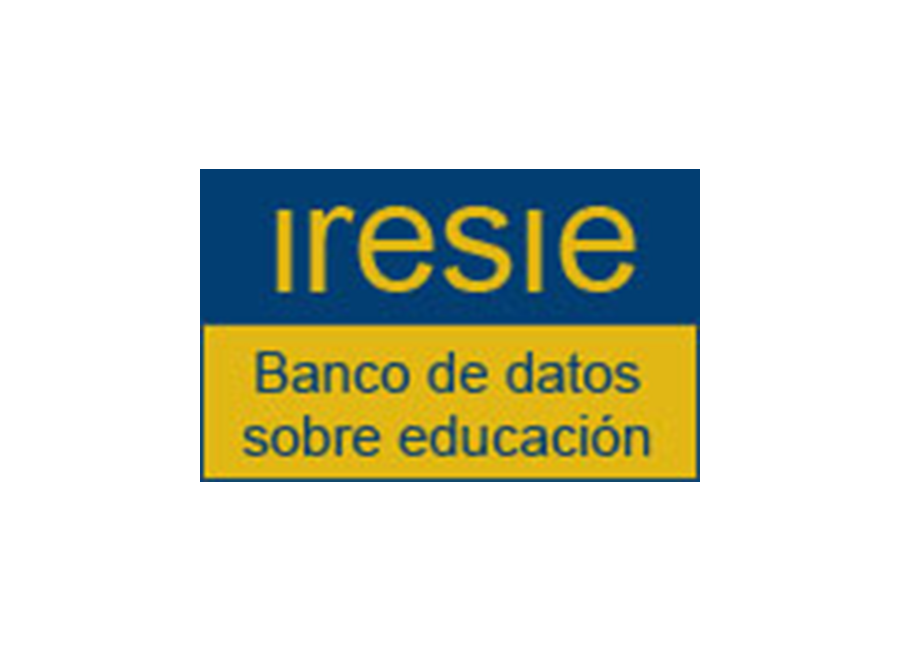Experiencias de desempeño y creencias de autoeficacia en profesores de lenguas extranjeras
DOI:
https://doi.org/10.31391/S2007-7033(2019)0052-010Palabras clave:
creencias de autoeficacia, profesores, lenguas extranjeras, experiencias de desempeñoResumen
El objetivo de este trabajo fue explorar las experiencias de desempeño que los profesores de lenguas extranjeras de un centro de lenguas han tenido a lo largo de su trayectoria y la relación que estas guardan con sus creencias de autoeficacia docente. El diseño fue cualitativo de tipo exploratorio; se hicieron entrevistas a profundidad a 7 profesores experimentados de una universidad pública mexicana. Se encontró que al inicio de su trayectoria los profesores no se sentían muy eficaces al impartir clases debido a la falta de práctica real durante su formación. Los profesores emplearon la reflexión, la formación y el esfuerzo como vías para mejorar su eficacia percibida. La experiencia más extensa de seis de los siete profesores ha sido enseñando idiomas extranjeros en un centro de lenguas universitario. En ese contexto, una actividad adicional que casi todos han realizado es impartir clases de contenido en licenciatura y maestría. Se encontró que la experiencia previa sí influye en las creencias de autoeficacia de los profesores y que éstas se diferencian según el tipo de materia y nivel educativo que enseñan. El dominio del idioma también aparece como un factor influyente en las creencias de autoeficacia.Descargas
Citas
Abernathy-Dyer, J., Ortlieb, E., & Cheek, E. H. (2013). An analysis of teacher efficacy and perspectives about elementary literacy instruction. Current Issues in Education, 16(3), 1-14. Recuperado de https://cie.asu.edu/ojs/index.php/cieatasu/article/view/1290/522
Afshar, H., S., Rahimi, A., Ghonchehpour, A., & Saedpanah, E., (2015). The impact of teaching experience on Iranian EFL teachers’ sense of efficacy and their perception of English teacher distinctive characteristics. Procedia - Social and Behavioral Sciences, 192, 714 – 719. doi: 10.1016/j.sbspro.2015.06.069
Atay, D. (2007). Beginning teacher efficacy and the practicum in an EFL context. Teacher Development, 11, 203–219. doi:10.1080/13664530701414720
Atay, D., Kurt, G., Camlibel, Z., Ersin, P., & Kaslioglu, Ö. (2009). The role of intercultural competence in foreign language teaching, 10(3), 123-135. Recuperado de: https://www.researchgate.net/publication/239606285_The_Role_of_Intercultural_Competence_in_Foreign_Language_Teaching
Autor & Colega. (2017).
Bandura, A. (1977). Self-efficacy: Toward a unifying theory of behavioral change. Psychological Review, 84(2), 191-215. doi: http://dx.doi.org/10.1037/0033-295X.84.2.191
Bandura, A. (1986). Social foundations of thought and action. Englewood Cliffs, NJ: Prentice-Hall.
Bandura, A. (1994). Self-efficacy. In V. S. Ramachaudran (Ed.), Encyclopedia of human behavior (Vol. 4, pp. 71-81). New York: Academic Press.
Bandura, A. (1997). Self-efficacy: The exercise of control. New York: Worth Publishers.
Best, B. (2014). A study of elementary school Thai English teachers’ perceived English proficiency and self-reported English teaching efficacy, Masters Dissertation, Language in India, 14(7), 1-13.
Brown, J. D., & Coombe, C. (Eds.) (2015). The Cambridge guide to research in Language teaching and learning. UK: Cambridge University Press.
Cocca, M., & Cocca, A. (2016). Self-efficacy in pre-school and primary teachers: Does experience, educational background, and teaching level matter? International Conference on Education and New Learning Technologies, Barcelona. doi:10.21125/edulearn.2016.0910
Cocca, M., Cocca, A., Martínez, E. A., & Rodríguez, M. G. (2018). Correlation between self-efficacy perception and teaching performance: The case of Mexican preschool and primary school teachers. Arab World English Journal, 9(1). doi: https://dx.doi.org/10.24093/awej/vol9no1.4
Covarrubias, C., & Mendoza, M. (2015).Sentimiento de autoeficacia en una muestra de profesores chilenos desde las perspectivas de género y experiencia. Estudios pedagógicos, 41(1). doi:http://dx.doi.org/10.4067/S0718-07052015000100004
Creswell, J. W. (2007). Qualitative inquiry and research design: Choosing among five approaches (2nd ed.). Thousand Oaks, CA: Sage
Cubillos, J. H., & Ilvento, T. (2012). The impact of study abroad on students’ self-efficacy perceptions. Foreign Language Annals, 45(4), 494-511. doi:10.1111/j.1944-9720.2013.12002.x
Díez Medrano J. (2014). The socio-economic returns of fluency in English as a foreign language. En Gerhards, J., & Hans, S. (Eds.), Globalisierung, Bildung, und GrenzüberschreitendeMobilität (pp. 239–257). Wiesbaden: Springer.
Filatov, K., & Phil, S. (2015). The relationship between university learning experiences and English teaching self-efficacy: Perspectives of five final-year pre-service English teachers. Australian Journal of Teacher Education, 40(6), 33-59. doi:10.14221/ajte.2015v40n6.3
García-Valcárcel, A. (2001). La función docente del profesor universitario, su formación y desarrollo profesional. En A. García-Valcárcel (Ed.), Didáctica universitaria (pp. 9-43). Madrid: La Muralla.
Garduño, E. L., Carrasco, P. M., & Raccanello, K. (2009). Los formadores de docentes y la autoeficacia para la enseñanza en una muestra de escuelas normales en el estado de Puebla, Perfiles Educativos, 32(127), 85-104, Recuperado de: http://www.redalyc.org/articulo.oa?id=13211845005
Gibson, S., & Dembo, M.H. (1984). Teacher efficacy: a construct validation. Journal of EducationalPsychology, 76(4), 569-582. doi: http://dx.doi.org/10.1037/0022-0663.76.4.569
Goker, S. D. (2006). Impact of peer coaching on self-efficacy and instructional skills in TEFL teacher education. System, 34(2), 239-254.
Hernández, R., Fernández-Collado, C., & Baptista, P. (2006). Metodología de la investigación. México: McGrawHill.
Hamman, D., Olivarez Jr., A., Lesley, M., Button, K., Chan, Y.,
Griffith, R., Elliot, S. (2006). Pedagogical influence of interaction with cooperating teachers on the efficacy beliefs of student teachers. The Teacher Educator, 42(1), 15-29. doi: 10.1080/08878730609555391
Holland, J. L. (1997). Making Vocational Choices: The theory of vocational personalities and work environments (3rd Ed.). Lutz, FL: Psychological Assessment Resources.
Hoy, A. W., & Spero, R. B. (2005). Changes in teacher efficacy during the early years of teaching: A comparison of four measures. Teaching and teacher education, 21(4), 343-356. Recuperado de: http://wps.ablongman.com/wps/media/objects/2347/2404137/TATE%202005%20Spero.pdf
Klassen, R., & Chiu, M. M. (2010). Effects of Teachers’ Self-Efficacy and Job Satisfaction: Teacher Gender, Years of Experience, and Job Stress. Journal of Educational Psychology, 102, 741-756. http://dx.doi.org/10.1037/a0019237
Lee, J. F. K. (2009). ESL student teachers' perceptions of a short-term overseas immersion programme. Teaching and Teacher Education, 25(8), 1095-1104. doi: http://dx.doi.org/10.1016/j.tate.2009.03.004
Marashi. H., & Azizi-Nassab, F. (2018). EFL teachers’ language proficiency, classroom management, and self-efficacy. International Journal of Foreign Language Teaching & Research 6(22), 89-102. Recuperado de: http://jfl.iaun.ac.ir/article_55019_8f68bb32b9b726999f2c5262903fc9ec.pdf
Mirsanjari, Z., Karbalaei., A., & Afraz, S. (2013). Teacher’ sense of efficacy in teaching English among Iranian EFL teachers. Indian Journal of Fundamental and Applied Life Sciences, 3(3), 417-428. Recuperado de:http://www.cibtech.org
Morris, D. B., & Usher, E. L. (2011). Developing teaching self-efficacy in research institutions: A study of award-winning professors. Contemporary Education Psychology, 36(3), 232-245. doi: http://dx.doi.org/10.1016/j.cedpsych.2010.10.005
Negoescu, A., & Bostina-Bratu, S. (2016). Teaching and learning foreign languages with ICT. Scientific Bulletin, 1(41), 21-27. Recuperado de: file:///E:/tEACHINF%20LEARNING%20FOREIGN%20LANGUACHES%20WITH%20ICT.pdf
O´Donoghue, L. J. (2015). Sorry. El aprendizaje del inglés en México. México: Mexicanos primero. Recuperado de http://www.mexicanosprimero.org/index.php/educacion-en-mexico/como-esta-la-educacion/estado-de-la-educacion-en-mexico/sorry-2015
Palmer, D. (2006). Sources of self-efficacy in a Science methods course for primary teacher education students. Research in Science Education, 36(4), 337-353. doi: 10.1007/s11165-005-9007-0
Pendergast, D., Garvis, S., & Keogh, J. (2011). Pre-Service Student-Teacher Self-efficacy Beliefs: An Insight into the Making of Teachers. Australian Journal of Teacher Education, 36(12), 46-58. doi:
http://dx.doi.org/10.14221/ajte.2011v36n12.6
Praver, M. (2014). Japanese university English language teachers’ self-efficacy beliefs: a mixed-methods exploration (Tesis doctoral). Recuperado de http://digital.library.temple.edu/cdm/ref/collection/p245801coll10/id/280496
Runhaar, P., Sanders, K., & Huadong, Y. (2010).Stimulating teachers' reflection and feedback asking: An interplay of self-efficacy, learning goal orientation, and transformational leadership. Teaching and Teacher Education 26, 1154-1161. doi: 10.1016/j.tate.2010.02.011
Sánchez, M., Salaiza, F., & Pérez, Y. (2013). Relación de la autoeficacia docente y la transferencia de la capacitación. En memorias del XVII Congreso internacional en ciencias administrativas. Recuperado de http://sistemanodalsinaloa.gob.mx/archivoscomprobatorios/_15_memoriaextenso/606.pdf
Secretaría de Educación Pública [SEP] (2008). La enseñanza de idiomas en México. Diagnóstico, avances y desafíos. DGAR. Reunión nacional de control escolar. Powerpoint. Documento interno.
Singh, K. (2007). Quantitative Social Research Methods. Thousand Oaks, CA: Sage.
Slami, Z., & Fatahi, A. (2008). Teachers’ sense of self-efficacy, English proficiency and instructional strategies: A study of nonnative teachers EFL teachers in Iran. TESL-EJ, 11(4). Recuperado de http://tesl-ej.org/ej44/a1.html
Swanson, P. (2014). The power of belief: Spanish teachers’ sense of efficacy and student performance on the national Spanish examinations. Hispania, 97(1), 5-20. Recuperado de https://muse.jhu.edu/article/541303/summary
Sun, S., Chen, H., & Song, Z. (2016). Cross-level moderating effects of conscientiousness on within-person relationships of self-efficacy to effort allocation. Human Performance, 29(5), 447-459. doi: https://doi.org/10.1080/08959285.2016.1245733
Tschannen-Moran, M., Woolfolk, A., & Hoy, A. W. (1998). Teacher efficacy: Its meaning and measure. Review of Educational Research, 68(2), 202-248. Recuperado de http://wmpeople.wm.edu/asset/index/mxtsch/rer1998
Tschannen-Moran, M., & Hoy, A. W. (2001). Teacher efficacy: Capturing an elusive construct. Teaching and teacher education, 17(7), 783-805. Recuperado de https://pdfs.semanticscholar.org/42e3/af5061de43d25b85144964ab7a3e44a7549f.pdf
Tschannen-Moran, M., & Hoy, A. W. (2007).The differential antecedents of self-efficacy beliefs of novice and experienced teachers. Teaching and Teacher Education, 23, 944-956. doi:10.1016/j.tate.2006.05.003
Villaume, S. K. (2000). The necessity of uncertainty: A case study of language arts reform. Journal of Teacher Education, 51(1), 18–25. doi: https://doi.org/10.1177/002248710005100103
Wheatley, K. F. (2002). The potential benefit of teacher self-efficacy doubts for educational reform. Teaching and Teacher Education, 18(1), 5-22. doi: http://dx.doi.org/10.1016/S0742-051X(01)00047-6
Wheatley, K. F. (2005). The case for reconceptualizing teacher efficacy research. Teaching and Teacher education, 21, 747-766. doi: doi:10.1016/j.tate.2005.05.009
Yilmaz, C. (2011). Teachers’ perceptions of self-efficacy, English proficiency, and instructional strategies. Social Behavior and Personality, 39(1), 91-100. doi: https://doi.org/10.2224/sbp.2011.39.1.91
Yüksel, G., & Alci, B. (2012). Self-efficacy and critical thinking dispositions as predictors of success in school practicum. International Online Journal of Educational Sciences, 4(1), 81-90. Recuperado de https://www.researchgate.net/publication/268410379_SelfEfficacy_and_Critical_Thinking_Dispositions_as_Predictors_of_Success_in_School_Practicum
Publicado
Número
Sección
Licencia
Derechos de autor 2019 Sinéctica

Esta obra está bajo una licencia internacional Creative Commons Atribución-NoComercial 4.0.

Esta obra está bajo una Licencia Creative Commons Atribución-NoComercial 4.0 Internacional.
Los autores que publican en Sinéctica están de acuerdo con los siguientes términos:
Los autores conservan los derechos de autor y otorgan a la revista el derecho de primera publicación de la obra autorizada simultáneamente bajo una licencia de atribución de Creative Commons, la cual permite a otros compartir el trabajo siempre y cuando se reconozca tanto la autoría de la obra como la publicación inicial en esta revista.
Los autores pueden celebrar acuerdos contractuales adicionales por separado para la distribución no exclusiva de la versión publicada de la revista (por ejemplo, publicarla en un repositorio institucional o en un libro), con el reconocimiento de su publicación inicial en esta revista.
Es permitido que los autores publiquen su trabajo en repositorios institucionales o en su propio sitio web antes y durante el proceso de envío, ya que puede generar intercambios productivos, así como una citación anterior y mayor del trabajo publicado.
Nota aclaratoria: A partir de 2017, Sinéctica se rige con base en la Licencia Creative
Commons Atribución-NoComercial 4.0 Internacional, versión que armoniza las licencias a nivel internacional.
Los artículos de 1992 a 2016 están bajo una Licencia de Creative Commons Reconocimiento-NoComercial-SinObraDerivada 4.0 Internacional, la cual permite compartir y distribuir una obra sin fines comerciales y con reconocimiento del autor, pero prohíbe modificar la creación original.





















